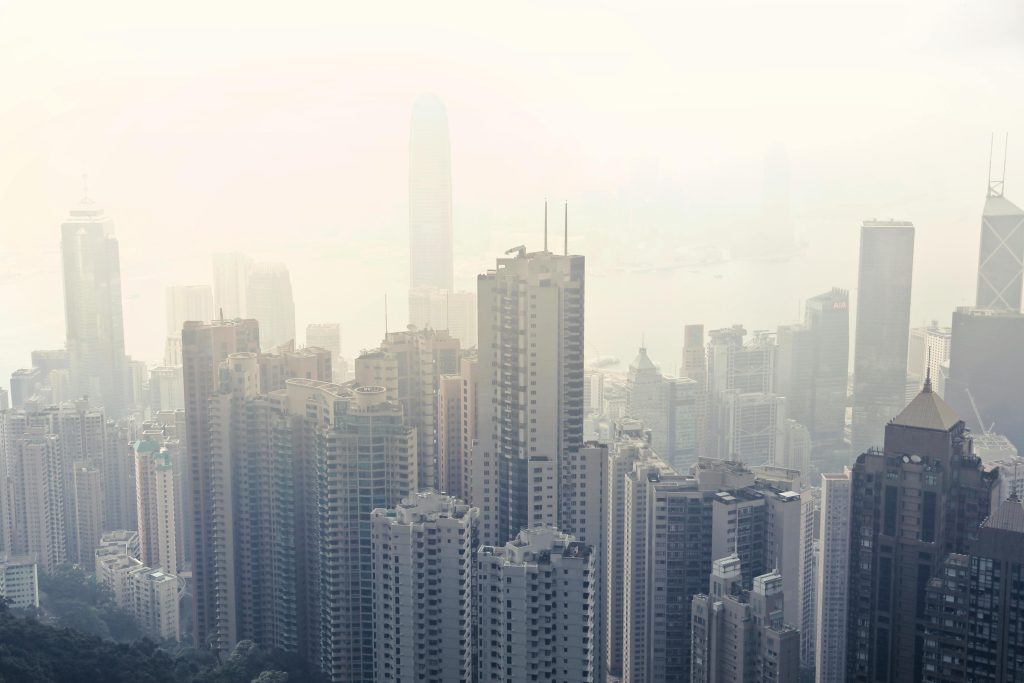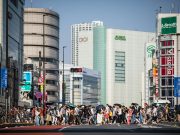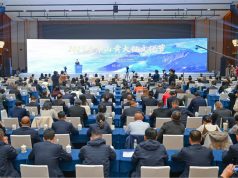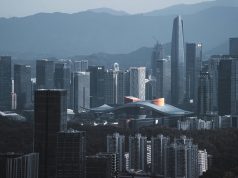
(Singapore, 28.11.2025)China Taiping Insurance Holdings came under pressure on Thursday as investors digested the insurer’s potential financial exposure to the deadly fire at Wang Fuk Court, a large residential complex in Hong Kong’s Tai Po district. The tragedy — now the city’s worst residential fire in more than six decades — has also intensified debate over Hong Kong’s long-standing use of bamboo scaffolding in construction.
China Taiping’s share price fell as much as 8% in early Hong Kong trading before recovering most of its losses by early afternoon. The sharp drop was driven by concerns over the company’s insurance commitments to the building, which had been undergoing mandatory inspection and maintenance work when the fire broke out on Nov. 26.
The insurer underwrote third-party liability and employee compensation for the HK$316 million renovation project at Wang Fuk Court. The work relied heavily on bamboo scaffolding and green protective mesh — materials now being examined by investigators for their potential role in fueling the blaze.
China Taiping’s policy covers the entire contract value plus HK$50 million in accident benefits, while a separate policy provides HK$200 million in employee compensation. The company also holds a general property-all-risk policy with HK$2 billion in coverage. The firm declined to comment on the details of its exposure.
Early estimates suggest the insurer’s maximum liability could reach HK$2.6 billion before reinsurance. Bloomberg Intelligence analysts said this amount would represent around 9% of the company’s forecast earnings for the year, or roughly 1.5% of its shareholder equity assuming half of the loss is recoverable through reinsurance.
Experts Warn of Underinsurance
Industry professionals say the insurance coverage in place may be insufficient given the size and age of the Wang Fuk Court complex, which houses around 2,000 units across multiple blocks.
Philip Mak, chairman of the Hong Kong Insurance Professionals Federation, said both the property-all-risk policy and the construction-specific policy appear “seriously underinsured” considering the potential damage to communal facilities and critical infrastructure such as elevator cables.
Mak added that the HK$50 million set aside for accident-related claims would fall far short if families of the deceased and the injured seek compensation. Authorities have confirmed multiple fatalities, and hundreds of residents remain unaccounted for as rescue efforts continue.
Bamboo Scaffolding Under Fresh Spotlight
Beyond financial liabilities, the fire has triggered a broader reckoning over Hong Kong’s reliance on bamboo scaffolding — a construction practice that has persisted even as other major cities have transitioned to metal structures.
Bamboo frameworks, secured by nylon ties and wrapped in mesh, are common across Hong Kong’s skyline. The tradition dates back centuries and became especially widespread during the city’s post-war development boom. Even today, thousands of workers specialize in erecting these flexible, lightweight structures.
The material’s adaptability is one of its strengths: bamboo poles can be easily cut to shape and arranged to fit tight, irregular spaces between buildings. This is a practical advantage in Hong Kong’s dense urban environment where construction sites often have minimal clearance.
However, bamboo has long been associated with safety risks. It is vulnerable to wear and tear, requires rigorous quality checks, and — when dry — can burn quickly. Several recent accidents have heightened public concern, including a collapse last year at a luxury project in Kai Tak and a fire in October that engulfed a bamboo-covered commercial tower in Central.
Investigators have not yet determined the cause of the Wang Fuk Court fire, but they are examining whether bamboo poles and the mesh coverings created channels for the flames to spread rapidly up the building’s exterior.
Safety specialists say the green plastic sheeting used to wrap the scaffolding may not have been flame-retardant. Government officials also noted that highly flammable foam materials, found at the scene, likely accelerated the blaze.
Experts argue that while bamboo itself does not ignite easily, the condition of the material, the type of covering, and the presence of other combustible construction supplies can dramatically increase fire risks.
Government Moves Toward a Full Ban
The Hong Kong government had already begun encouraging greater use of metal scaffolding earlier this year, requiring that at least half of new public projects adopt metal frames. Officials cited bamboo’s “intrinsic weaknesses,” including variability in strength, aging problems and high combustibility.
But progress had been gradual, partly due to pushback from the construction sector. Industry groups argue that bamboo is safe when proper procedures are followed and warn that a shift to metal could displace local workers and erode a unique cultural skillset.
The fatal Tai Po fire has altered the political mood. On Nov. 27, Chief Executive John Lee announced that Hong Kong will now move toward completely phasing out bamboo scaffolding in construction. The government plans to work with industry bodies to retrain workers and expand the use of fire-resistant metal systems.
Safety experts caution that replacing bamboo alone will not eliminate fire hazards. Other materials commonly used alongside scaffolding — including netting, boards and temporary platforms — also require strict fire-proofing measures to prevent similar disasters.
As investigators continue to assess the damage at Wang Fuk Court, the incident is shaping up to be a watershed moment for building safety and insurance standards in Hong Kong. For China Taiping, the financial impact may stretch well beyond immediate payouts as regulators and the public call for stronger safeguards for high-rise complexes.
For the city, the fire has reopened long-standing questions about how to modernize construction practices while preserving local traditions — and how quickly reforms should move when public safety is at stake.





































